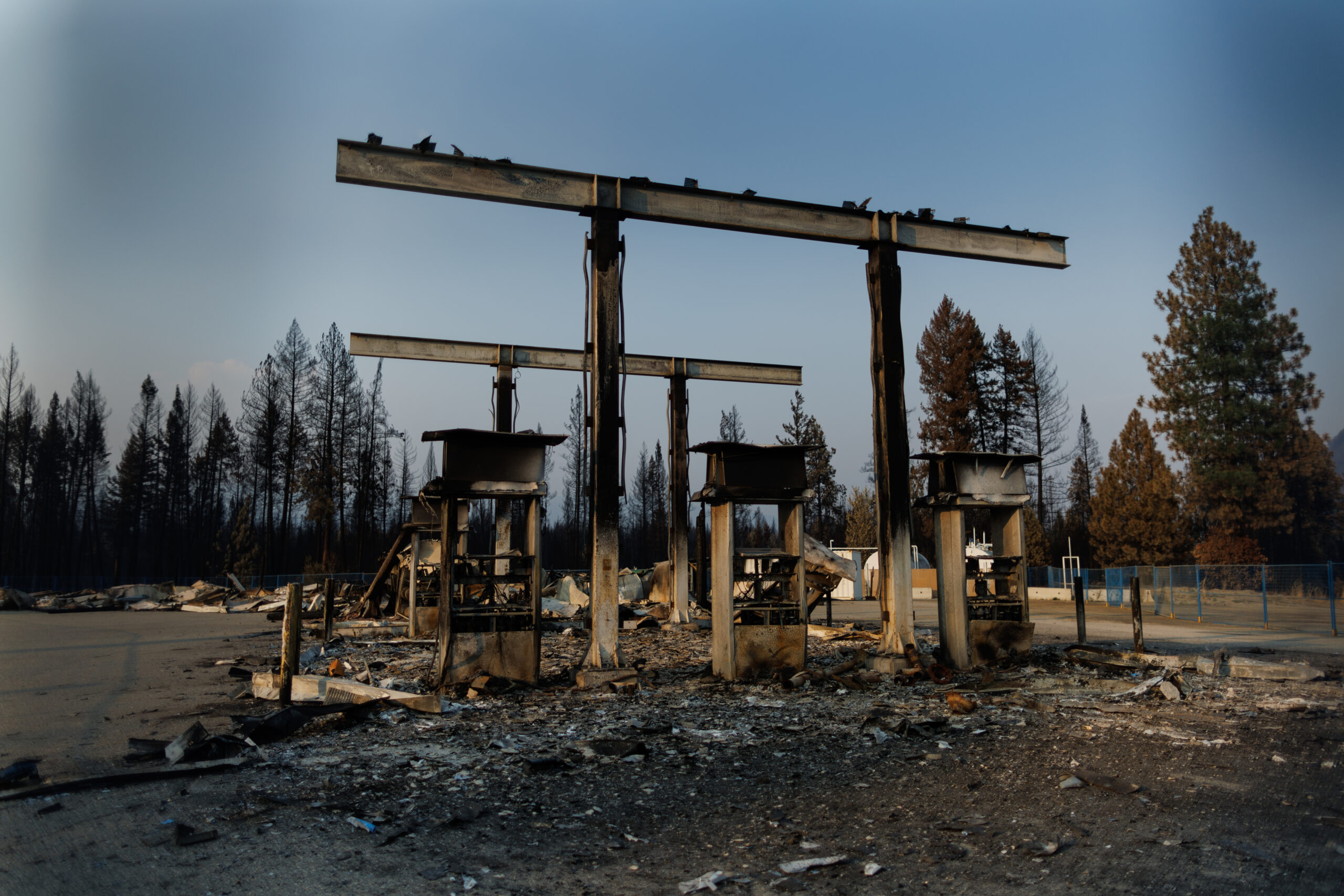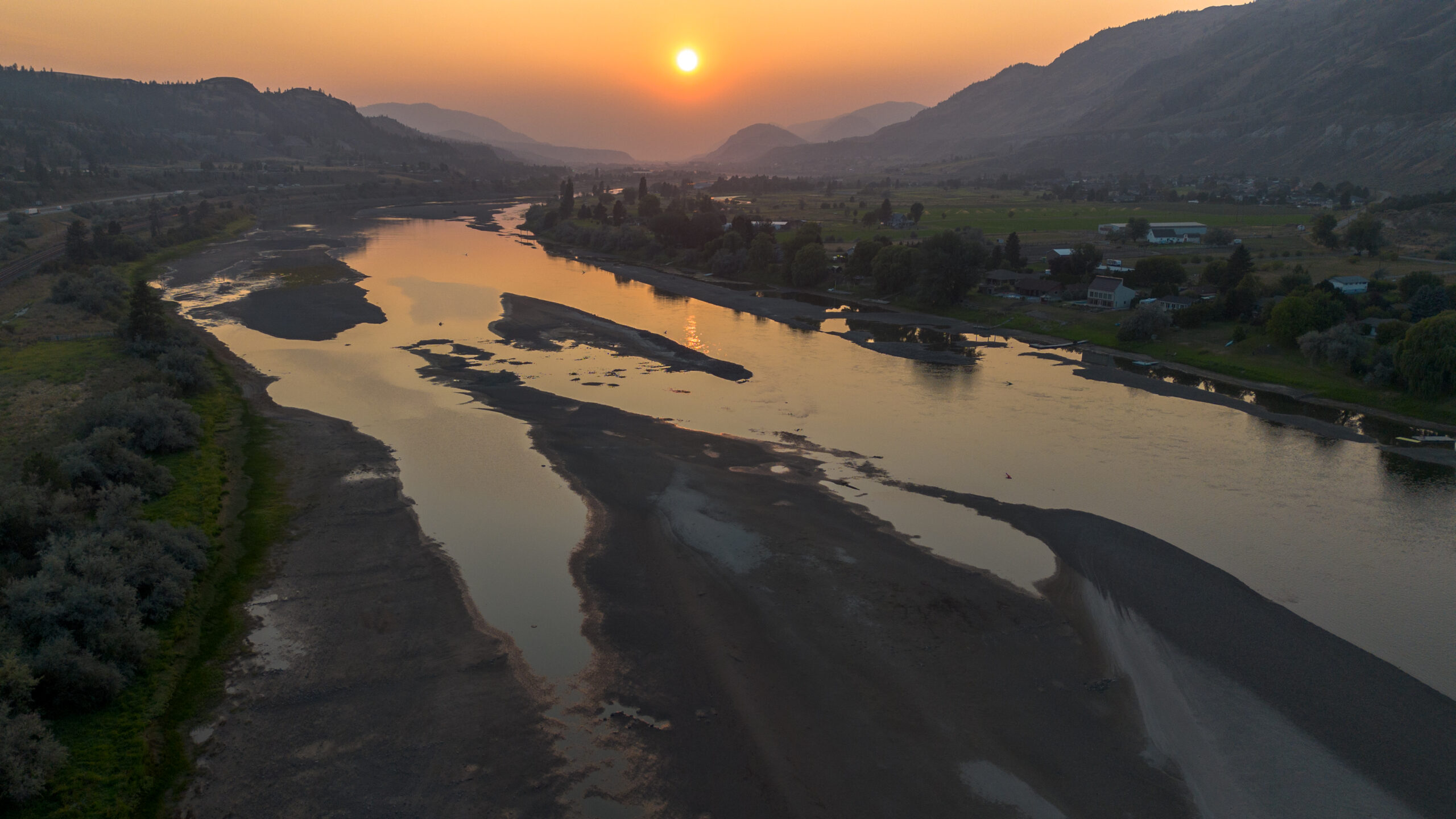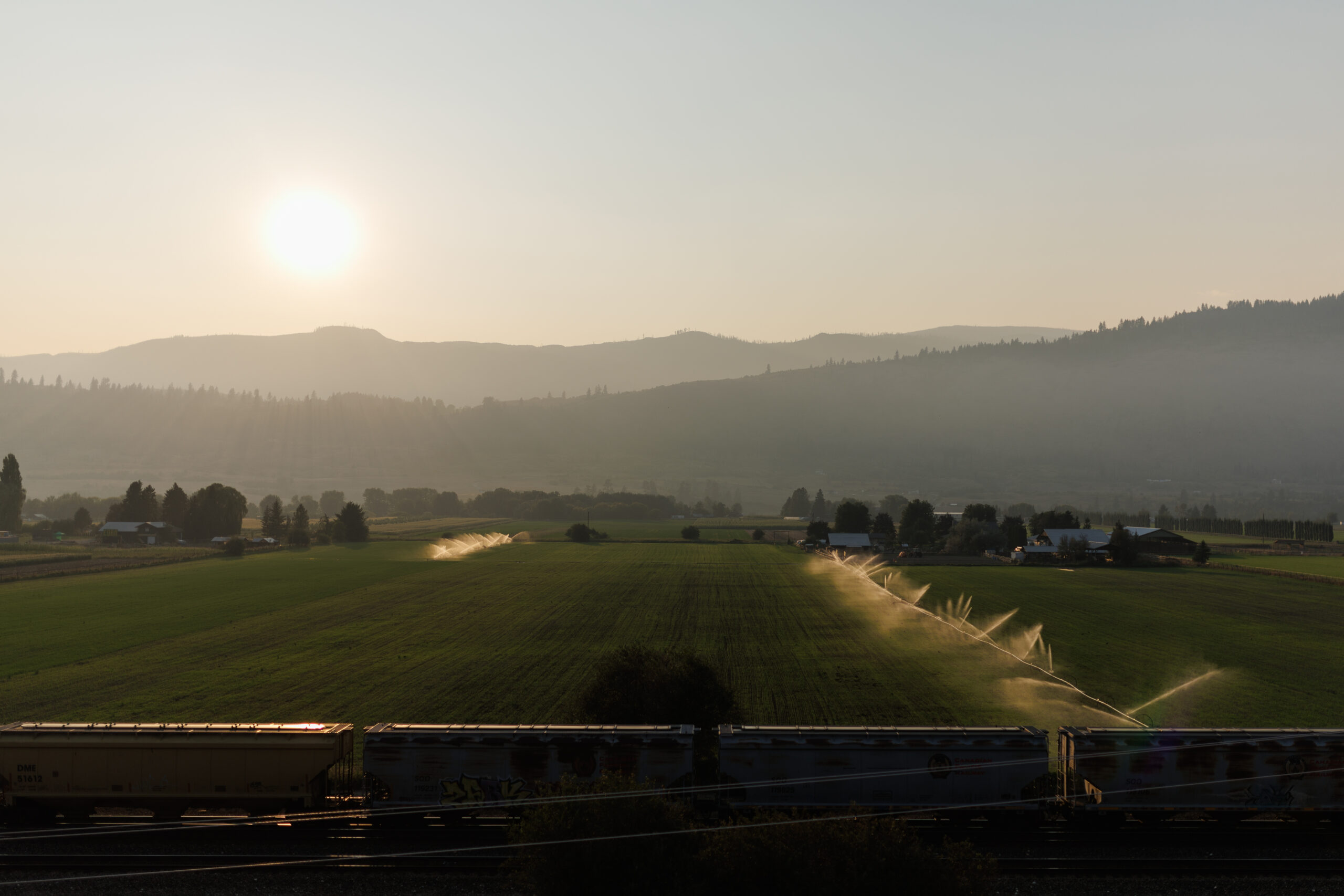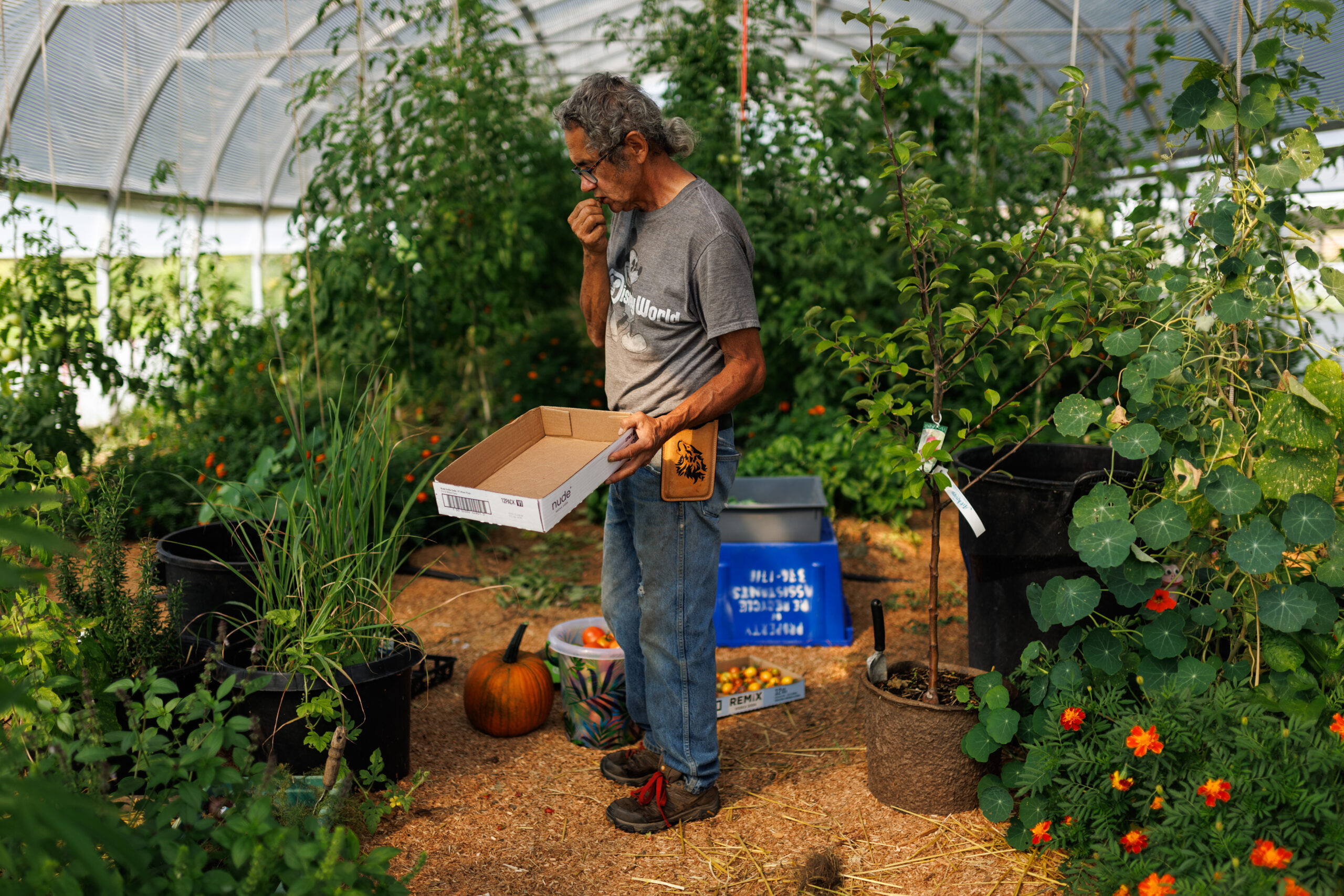
Court halts tailings increase as First Nation challenges B.C.’s decision to greenlight it
Court sides with Xatśūll First Nation, temporarily halting Mount Polley mine waste expansion
This story is part of Nourish, a series about how First Nations are fuelling their people with sustainably harvested, healthy and culturally safe foods amid a changing climate
Earlier this summer, Lisa Kenoras visited Adams Lake in Secwepemc territory for the first time — a deep, cool lake in the arid Interior of British Columbia. She wore moccasins that she created with her grandmother, a gift and keepsake for graduating university.
Her boss and mentor, Dawn Morrison, brought her to the mountains to see the territory. The two Secwepemc women are trying to build community access to healthy and traditional foods. Kenoras recalls her first big meal with Morrison: fresh vegetables with elk, deer and bison meat.
“I looked at Dawn and I was like, this is medicine,” she says. “This is pure food that’s nourishing who I am.”
Kenoras recently returned after living away, and is reconnecting with family and community she hasn’t seen in years — and with the land.
“Dawn says, ‘This is Adams Lake.’ And I was like, wow, I’m home,” she says. “That was my welcome home.”
But just a month later, part of the area they visited went up in flames. The Bush Creek East fire is one of the fastest moving fires in B.C. history. It grew almost six times in size over 12 hours on Aug. 18, from 7,000 hectares to 41,000 hectares. It burned through the lower portion of Adams Lake, singeing its entire southern shoreline and destroying more than 200 homes in Skwlāx te Secwepemcúl̓ecw (Little Shuswap Indian Band) and the Columbia Shuswap Regional District.

As of Sept. 12, the fire continues to burn at 43,192 hectares, the size of roughly 80 football fields, according to the BC Wildfire Service. It has been mostly contained, but still risks becoming more active again due to warm, dry conditions. But the burn has moved away from human structures, leaving a wake of charred forest — and food.
“I’m still processing it. There’s a sense of loss,” Kenoras tells The Narwhal at a community garden on Neskonlith Reserve 1, about a 20-minute drive from Adams Lake, still under evacuation alert from the fire. Smoke hung heavy between the mountains but sun broke through over the garden, which remained unscathed.
Kenoras and Morrison are dedicated to increasing Indigenous food sovereignty, in Secwepemcúl’ecw (Secwepemc territory) and beyond. They work on the garden and pass on harvesting and preserving techniques to community members.


A history of being removed from the land and constricted to reserves, away from hunting and harvesting grounds, and children being removed from families who could pass on knowledge about traditional foods and practices, is a root cause of food insecurity, Kenoras says. Now, climate change is risking that food security even further.
Fire is a natural part of this landscape but it’s become more destructive. Scientists have attributed this partly to drier, hotter summers caused by climate change. Other factors include poor forestry management and the suppression of Indigenous stewardship, including cultural burns, which First Nations use to manage fire fuel. The combination of these factors increases the likelihood of destructive, fast-moving and unpredictable fires.
“Our people have been marginalized onto these reserves. And then because of climate change, they’re being burnt out,” Kenoras says. “So, who’s responsible for that?”



The Cwelcwelt Kuc “We are Well” garden is just a 25-minute drive south of Adams Lake, in Chase, B.C. Morrison mentors staff and community members in growing organic vegetables for the community. Their initiatives expand beyond gardening to restoring habitat such as the elk bedding nearby, an area where elk are covered from predators to rest. Their initiatives also include advocating for protection of “Indigenous foodlands” and food sovereignty policy and raising money for food initiatives. They take people onto the territory, and support hunters, fishers, farmers and gatherers. She says it’s far more than just gardening — it’s about working towards “social, cultural and ecological systems change.”
Amid the fires, Morrison was eager to harvest some vegetables from the Cwelcwelt Kuc Garden. The smoke and wildfires kept her team out of the garden for days, and she knew some food was ready to be picked and shared. She got a large bin and a sharp knife and began to harvest cauliflower, broccoli, cucumbers and kale. The garden is lush green amid the brown grass and smoky horizon, and is dotted with signs in Secwepemctsin (the Secwepemc language).

Morrison is the founder of the Working Group on Indigenous Food Sovereignty and has been working on food sovereignty for 18 years, sitting on several food security and food sovereignty committees. The working group also launched a garden in East Vancouver to serve the urban Indigenous community. Indigenous food sovereignty is her passion, thinking of how to ensure there are strong food systems the next generation can rely on 10 or 20 years down the line — but at moments like this, the immediate needs of people are her first concern.
Morrison’s cousin, Kenny Tomma, built his home in Skwlāx te Secwepemcúl̓ecw by hand. A fisher and hunter, his freezer is usually full of food like elk, bison and salmon that he and a local Secwepemc group of hunters share with the community. His home was a community hub, storing food and equipment for the food sovereignty working group, including a trailer of hunting camp equipment that took years to acquire. He loves providing food for his family, Morrison says. He makes grave markers for the community cemetery, and was just at community member Janice Billy’s house helping her cut grass weeks before the fire. “He helps a lot of people,” Billy says.
On Aug. 18, he lost it all. The Bush Creek East fire destroyed a third of the structures in the Skwlāx te Secwepemcúl̓ecw. A total of 85 structures were destroyed, and 31 were homes — including Tomma’s. As the buildings burned, so did a lot of food the community depends on.
“Winter’s coming, and everybody who lost their freezers don’t have food for this winter,” Morrison says.
Morrison launched a GoFundMe campaign to help Tomma. Together, they are taking inventory of everything he and the food sovereignty working group lost and raising funds to replace food storage and equipment — while also trying to address immediate food needs when so much has been lost.

Morrison says many lower income people rely on traditional foods in the face of high grocery costs. One 2019 study found 48 per cent of all First Nations households in Canada are food insecure.
While the Neskonlith Band is only under evacuation alert, their close neighbours and relatives, Adams Lake Indian Band and Skwlāx te Secwepemcúl̓ecw, went under evacuation order. Kenoras’ 15-year-old brother, Bryan Dennis, volunteered for seven days straight, day and night, at the Splatsin Community Centre, which was receiving evacuees.
“It’s saddening,” Dennis says. “Leaving the place you grew up and coming back to it being burned down, and just ashes — where do you go from there? When I see evacuees, I feel for them.”
He didn’t want to leave. He says he was glad he could help “make them feel safe.”
“Little warrior,” Kenoras says with a big smile. “I’m so proud of you.” He beams back at his sister.
He says he’s also thinking of the animals injured, displaced or lacking food.
“This is their territory,” he says. “All of a sudden, there’s a raging fire around them.”
He’s also noticed the river being unusually low, and thinks of the impact of warm water on fish. Climate change is creating inhospitable conditions for all the living beings that call this place home.

Many Secwepemc people still depend on grocery stores for their regular food. The vulnerabilities of this flare up during disasters, such as when roads to First Nations on the Lower Mainland were blocked in the catastrophic 2021 floods, or more remote communities felt the stress of disrupted supply chains during the onset of COVID-19 in 2020.
Morrison says infrastructure upgrades and equipment are needed to build up self-sufficiency around food. She wants to erect a walk-in cooler and freezer at the garden, but there is no BC Hydro service to the land yet. The Neskonlith and Adams Lake bands also used to have an efficient shared irrigation system, but it was damaged in 2003 wildfires and never repaired. She says the lack of infrastructure makes it difficult for other people in the community to grow food. At the garden, they’ve dug a well and a pond and installed a fire pump. They do what they can to garden sustainably and use as little water as possible.

First Nations have always cultivated food by working within ecosystems, but this wasn’t done through ranches or farms.
“Agriculture isn’t our traditional way,” she says. “It’s something that was brought in through colonization, but we’ve adopted it and we just need to find ways to minimize the amount of work we do here so we can be up in the mountains.” The food they grow here supplements their goals of bringing people hunting and berry-picking, harvesting foods and medicines from the forest floor.
The provincial government funded a number of First Nations food sovereignty projects in May 2023, including in Syilx and Secwepemc territory in the Okanagan. Adams Lake Indian Band received $71,250 for knowledge-transfer activities like processing, canning and dehydrating. The Okanagan Indian Band received $80,000 to provide culturally safe and affordable food, support cultural activities and build a kitchen, pantry, cooking pit and root cellars.
Many Indigenous Peoples have programs focused on self-sufficiency when it comes to food. Tk’emlups te Secwepemc developed an Indigenous Food Sovereignty program after COVID-19. The Community Futures Development Corporation of Central Interior First Nations hosts the Kweseltken Market in Kamloops that highlights Indigenous creators and food growers.
Morrison believes these programs are important, especially because they offer an alternative to the industrial agriculture that’s so pervasive in this region.
A 2023 report from the Intergovernmental Panel on Climate Change emphasized the need to change agriculture, including cutting emissions, reducing water use and waste.

“Look around here. Who is being favoured in this system?” Morrison says. “Industrial agriculture is generating revenue off of our land, and we’re not getting a cent, and they’re taking a lot of water at a time of drought.”
“It’s our land, and we just have to sit and watch.”
Just down the hill from the garden, Janice Billy stands at her kitchen table with her two daughters in her log home with rich brown walls and natural light pouring in. The table is covered in peaches, and they’re working in an assembly line to can them. The walls are dotted with antlers and a full bear skin from one of her husband’s hunts. Billy and her husband are extremely self-sufficient, with a vegetable garden and a fruit orchard. She is a master at preserving foods and her husband fishes and hunts. She is teaching her daughters some of her skills, and also volunteers at the Cwelcwelt Kuc garden and teaches Secwepemctsin.
Right away, she brings up her need to build a fire-proof cellar. She mentions not hearing much about Skwlāx te Secwepemcúl̓ecw when she was listening to the news, despite the devastation in the community. Skwlāx te Secwepemcúl̓ecw was already experiencing a housing shortage, and losing 31 homes in a wildfire made things worse, she says.


Revitalizing traditional food practices — whether harvesting food or preserving it — goes hand in hand with revitalizing the other things lost in residential school, including speaking the language, she says. She says food sovereignty means being able to go out on the land, singing the berry picking song as you pick, and the deer song as you hunt. And the most central thing, she says, is protecting the land and water and all the foods they carry.
“It’s not just learning the words of those foods, but it’s learning the values that go with it,” she says. “You just take what you need, you don’t destroy anything, you make offerings. It’s all those connections to the food and the language that goes with it.”

More than an hour’s drive north of Billy’s home, Fred Fortier has the radio playing in his hothouse, where food plants like bell peppers and strawberries climb toward the ceiling. He has hundreds of onions hanging just outside, which local kids braided into long strands for him. Across his property, he has a cold room, a shed and hundreds of plants between the hothouse and the ground outside it.
Fortier, who is Secwepemc and Nlaka’pamux, posted some free squash to Facebook the other day. Billy took a couple and says they were huge — “I used them for three different funerals.”
Fortier shows off his pumpkins — “never seen pumpkins this yellow in August”; potatoes — “mix fresh pine in the soil, the scab goes away”; garlic — “the kids planted 3,500 in two hours” and zucchinis — “could have entered the fall fair.”
But he doesn’t enter the fall fair anymore — “no competition,” Fortier says with a little grin.

Fortier runs Uncle Freddie’s Hothouse and Nursery in Chu Chua, B.C., and has gardened for 50 years and taught kids about regenerative agriculture for 35 years. He doesn’t use pesticides on his farm and rotates the many crops he grows there. He also builds traditional dip nets. He likes trading his produce and products, versus selling.
“Wildfires, doesn’t matter where, impact us as gardeners,” he says, resting in the shade with a mug of homebrewed kombucha. At a critical time for pollination, bees can get lost in the smoke, he says — “they can’t find their way home at nighttime.”
Fortier often works with the Simpcw First Nation, where he’s a member, and is an advisor to the minister of agriculture and the First Nations Health Authority. He says more people need to be taught to grow food and hunt. And in order to make that food accessible, he wants to see a food processing hub built that food growers in the area can use to preserve their foods, either to sell or to give away. Otherwise, lots of produce is wasted, he says, and it’s difficult for growers to build or access food processing facilities or certified kitchens.


One of the most important things he says he’s noticed is that First Nations need a designated food sovereignty co-ordinator to help get local food production and processing off the ground. It’s too big of a job to do off the side of someone’s desk.
“If there’s no food sovereignty co-ordinator, it doesn’t get done,” he says.
“That’s our huge, huge challenge is to provide that capacity … Without the capacity, we rely on other people.”
Fortier is helping teach a three-week course at Thompson Rivers University on food sovereignty, which is geared toward preparing people for food sovereignty jobs and teaches regenerative agriculture. It uses low-emission, sustainable practices that focus on topsoil regeneration, as opposed to industrial agriculture which has higher emissions and erodes topsoil ten times faster than it can be replenished.
For Fortier, education and training in regenerative agriculture is key. He challenges anyone who doubts the practice to do it their own way, and then watch his. Not only does he say regenerative agriculture is more productive — he has to do less work.
“If you’re going to be a gardener, be a lazy gardener,” he says (a T-shirt waiting to happen).

A 2020 study found regenerative farms were 78 per cent more profitable than conventional ones. The high-quality soil boosts productivity, and stores more carbon in the soil than other methods. According to the United Nations Environment Programme, more than 90 per cent of crop varieties have been wiped out in the past century, whereas regenerative practices emphasize biodiversity.
There’s still a long way to go — people need money to build up infrastructure and access training, he says. To him, Indigenous food sovereignty isn’t about finding a way to succeed in the conventional market, it’s about building up local access and trade. “We need to hook up our own trade system back,” he says.


At an individual level, he says people will have to change techniques to better use water and create shade. And lastly, he sees passing these practices to youth as the solution.
“Youth are really interested now,” he says. “They’re saying, ‘OK, if I want to eat, I gotta grow some food.’ The kids are more aware of where their food comes from … I’m seeing more and more young people every year coming to workshops, working with older people in the gardens, there’s this trade of knowledge between them.”
Morrison sees food sovereignty as a “social justice issue at heart.” She emphasizes social issues are closely connected with people’s capacity to feed themselves and their family, and “we can’t have food security without housing security.”
People on social assistance often have to rely on food programs for healthier options, she says, noting it’s not ideal.
Fortier agrees, saying food programs are a band-aid, and while they may address short-term needs, they do not amount to food sovereignty. If a program relies on bringing in food from outside the territory, it’s not self-sufficient, he says.
“That’s not a food sovereignty strategy, that’s just running a food bank,” he says.

And as the fire that tore through Skwlāx te Secwepemcúl̓ecw proved, a cache of food or an outside supply is only as safe from disaster as physical structures are. The ability to access and produce more is the only fail safe — and keeps people fed and healthy as they get back to the land.
Like Billy, Kenoras believes food sovereignty and social issues alike are about getting people back to the land.
“Even though our whole backyard could be filled with medicines and traditional foods, there is that gap in knowledge because of colonialism,” she says. “Indigenous food sovereignty is being able to fill those missing gaps so people can be self-sufficient in who they are.”
“Once you get them back to the land, they’re standing in their sovereign power.”
The Narwhal’s series, Nourish, is made possible with support from the Real Estate Foundation of BC. As per our editorial independence policy, no foundation or outside organization has editorial input into our stories.
